Investigating the Ocean's Past for Insights into Climate Change's Future
By Rebecca Goldfine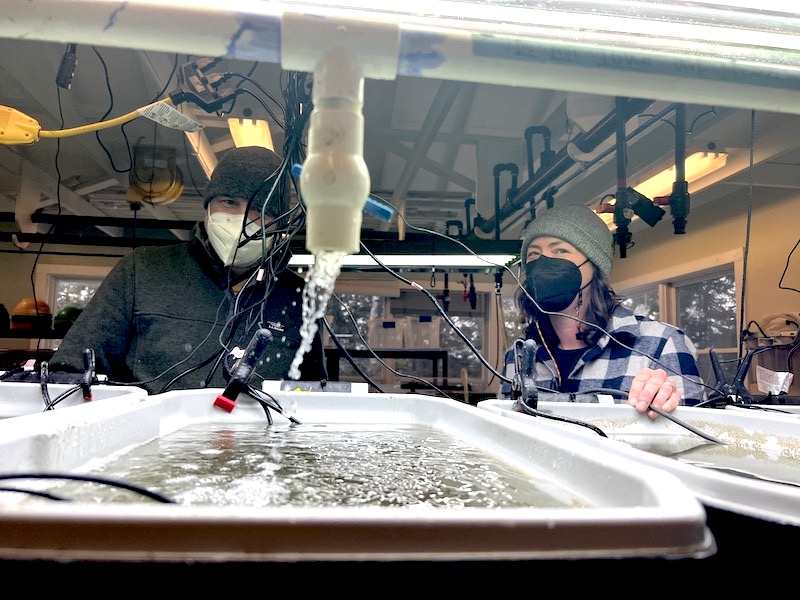
While LaVigne can find evidence for ancient ocean and climate conditions by analyzing centuries-old clam and oyster shells, among other such relics, she also studies the chemistry of marine ecosystems by recreating them in a laboratory.
Over winter break, LaVigne and a team of collaborators put in long days at the Schiller Coastal Studies Center's "wet lab." (It's so named because it's supplied with seawater from nearby Harpswell Sound.) Within a week, they had set up a complex lattice of piping, sensors, clamps, and wires running into and above a row of sixteen tanks. For the next several months, the tanks will nurture—or not, as the case may be—juvenile clams, crustose coralline algae, and scallops.
The tanks are set at different temperatures and pH levels to mimic a variety of sea conditions, from current day to a more acidic and hotter future, when the oceans will be transformed by rising carbon dioxide levels. By the end of the experiment, she will have collected enough data from the organisms' shells to discern what the Gulf of Maine was like as far back as the 1600s, well before the fossil-fueled Industrial Revolution began changing the climate.



Policy and Science
LaVigne's latest research project is driven both by her scientific curiosity and her desire to contribute to the public discussion around protecting Maine's fisheries, particularly how to manage and support the state's burgeoning aquaculture industry.
She was first inspired to launch the project after participating in a community group (which eventually became part of the Maine Climate Council) that was addressing the acidification of Maine's oceans. The group consisted of state representatives, scientists, environmentalists, and people who fish for their livelihoods. LaVigne was the sole paleoceanographer.
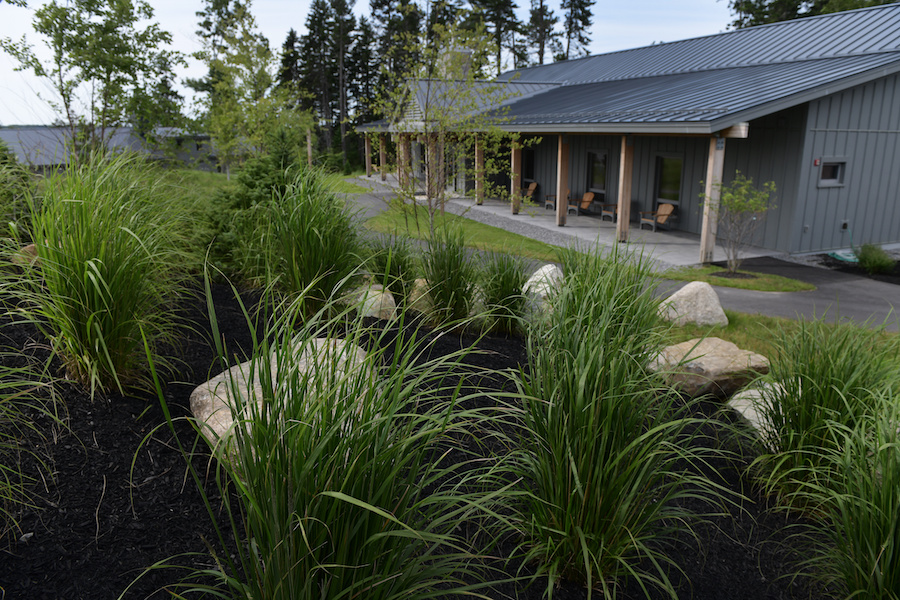
The climate group's policy makers were keen to know how the Gulf of Maine had changed over the past one hundred to two hundred years, saying this information could help them draft more effective legislation. "This seemed like an opportunity to look at species in the Gulf of Maine to see if they can provide a historical baseline for pH," LaVigne said.
She also knew the project would benefit students in her lab. In the past, she has researched tropical corals and deep-sea corals on the West Coast. "So, when I came to Bowdoin, I had never worked on anything in the Gulf of Maine or at this high a latitude," she said. "I was looking for my next phase of research that could involve students on local questions." This semester she's hired four lab assistants: Alexis Mullen ’23, Lemona Niu ’23, Lucie Nolden ’22, and Jean Clemente ’23.
She asked Iowa State University's Alan Wanamaker, an expert in Arctica icelandica clams in the Gulf of Maine, and Claremont College's Branwen Williams, who specializes in native crustose coralline algae, to join her research team. She is also collaborating with Joseph Stewart at the University of Bristol, a boron isotope expert who will use a mass spectrometer to analyze their samples at the molecular level.
The Canaries of the Oceans: Marine Calcifiers
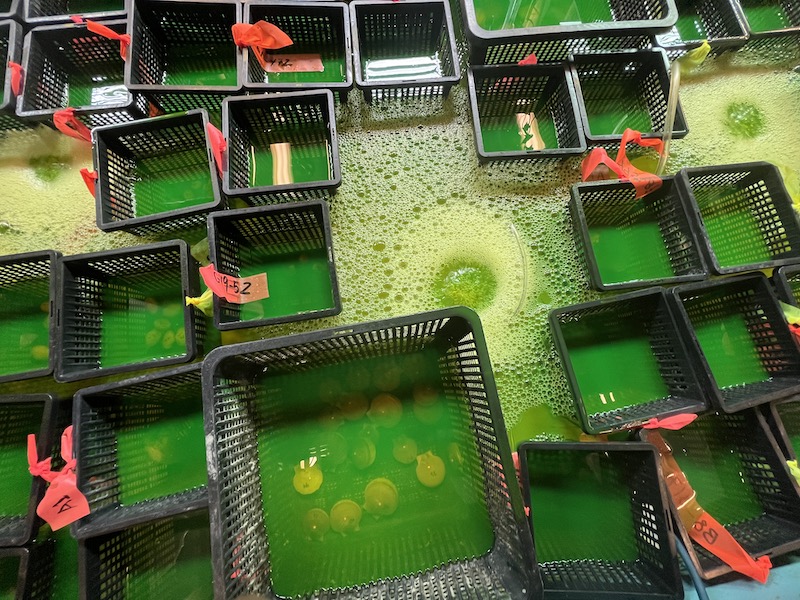
LaVigne's experimental set-up—growing marine animals in sixteen tanks with varying temperatures and pH levels—is designed to reveal how past, present, and future conditions affect shell growth and their chemical makeup.
Marine organisms that build calcium carbonate shells extract chemical components for their shells from surrounding seawater, and so are invaluable to oceanographers studying the chemistry of oceans. Scientists use the isotopes of stable carbon, boron, and oxygen in shells or corals to glean information about seawater salinity, pH, and temperature at the time of shell formation. With some fossil records, they can reconstruct ocean conditions from millions of years ago.
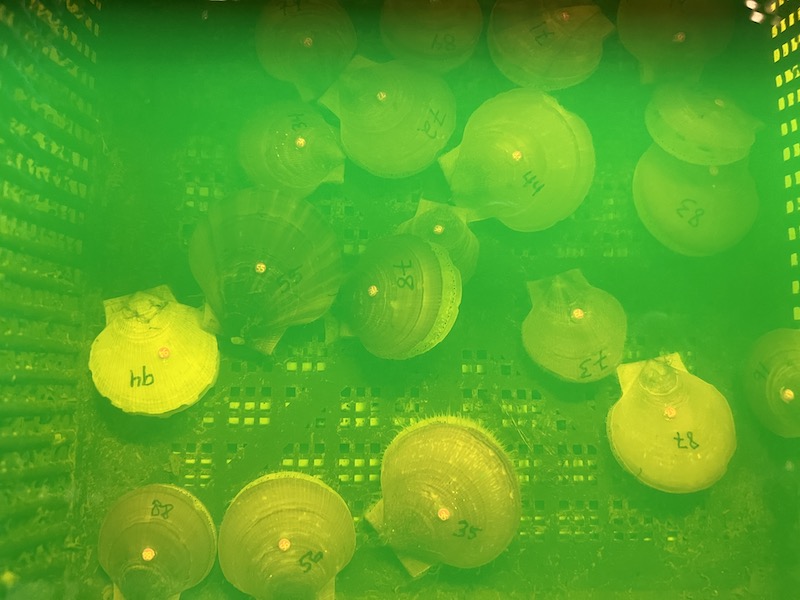
Boron in particular has been found to be an accurate proxy for pH, as its incorporation into the shell from seawater is determined by the water's pH level.
To calibrate the relationship between pH and boron, LaVigne's team is growing clams and algae in seawater that ranges from pH 7.4 to approximately 8.1, and temperatures from six to twelve degrees Celsius. The wide range is to help the researchers more precisely determine the relationship between boron and pH.
"There is no easy or effective way to transfer the boron isotope in a shell material to past pH unless you do a calibration across a range of pH values," Wanamaker explained. "We're doing this calibration and applying it to old shells we have already collected and dated to see how variable that system was before there were major human influences."
Maine sea farmers and policy makers are also interested in the question of variability, because they want to know the best spots for growing shellfish.
While oceans across the world are acidifying as they absorb carbon dioxide from the atmosphere, the change is not happening uniformly. Some areas have a higher pH level than others, a variability affected by currents and, particularly in Maine, a craggy coastline pocketed with inlets and coves, as well as uneven proximity to freshwater sources like streams and runoff. "It would be helpful to know if it was more or less variable in the past to determine if this variability is changing," LaVigne said. "It's important to understand how those processes are coming together to predict how this region will change," she added.
The day when LaVigne and her collaborators can read shells' boron values to determine bygone ocean pH levels will be very exciting, LaVigne anticipates. "We need to know what the baseline is if we're going to ask folks to make changes to reduce the impacts of climate change."
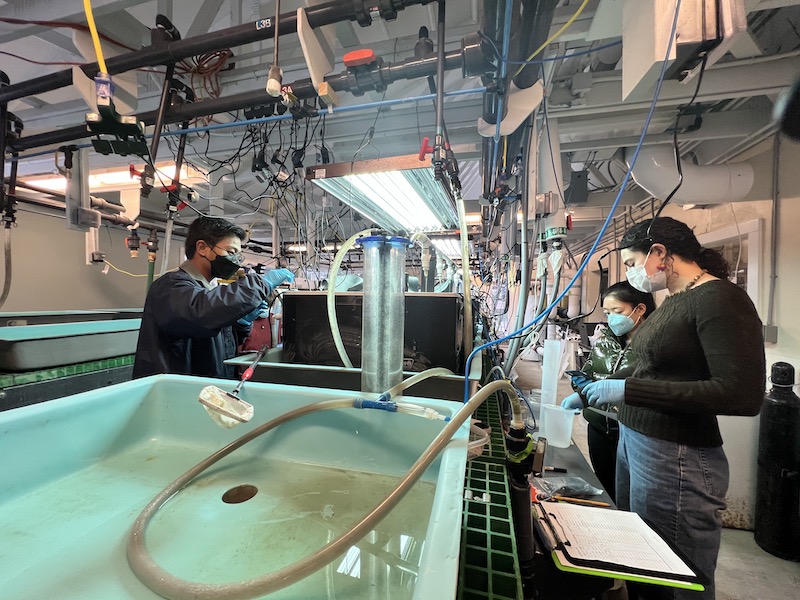 Michèle LaVigne secured a Bowdoin Faculty Research Award to hire four student lab assistants this semester. They'll spend one morning a week at the Schiller Coastal Studies Center collecting samples and taking measurements. "I'm excited to open up more opportunities to get students down here, and this is very hands-on compared to other research I do," LaVigne said.
Michèle LaVigne secured a Bowdoin Faculty Research Award to hire four student lab assistants this semester. They'll spend one morning a week at the Schiller Coastal Studies Center collecting samples and taking measurements. "I'm excited to open up more opportunities to get students down here, and this is very hands-on compared to other research I do," LaVigne said.
She also appreciates being able to give students a chance to engage in scientific research that does not require they produce a major paper at the end—unless they decide to.
The students—Clemente, Nolden, Mullen, and Niu—are all earth and oceanographic science majors.
"My passion is oceanography," Mullen said. "And what interests me is how oceans change over long periods of time." She added, "I'm also excited because since I've been at Bowdoin there haven't been a lot of research opportunities in earth and oceanographic science [due to COVID]."
Niu said she jumped at the chance to do oceanographic research in the Schiller wet lab—the first time she's worked in the space. "It's nice we get to do this in our own backyard," she added.

